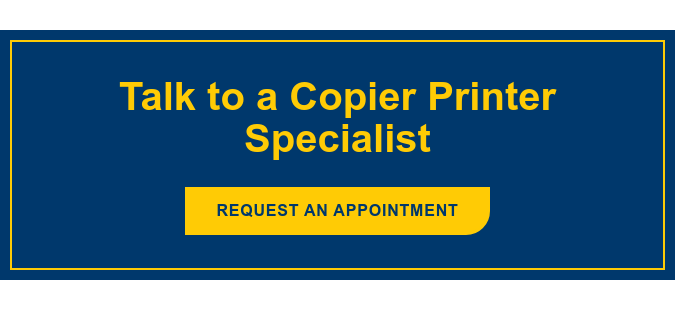The pandemic has brought about many changes to how we work, and though many of us would be loath to admit it, not all of them have been bad. At the start of the pandemic, the sharp drop in commuting and long-distance travel saw welcome decreases in air pollution and visibly cleaner water.
As more companies are looking forward to returning to the office, and airplanes are once again filling the skies, it's becoming apparent that any short-term environmental gains in air and water quality due to the pandemic may unfortunately be temporary. However, there is at least one pre-pandemic habit that can easily be changed for good, and that's office paper waste.
Business Printers and Copiers Generate a Shocking Amount of Waste
You might assume that since the pandemic, and an increasingly digitized remote workforce has revolutionized how business is done around the world, that our paper usage would decrease. Certainly, remote workers tend to waste far less paper than in-person workers do. But as employers are celebrating a return to the office, their wasteful workplace habits have returned as well.
According to the EPA, around 90% of all office waste is paper.
Within 24 hours, nearly half of all printed documents are discarded, and 30% are never picked up from the printer.
The average office worker still uses about 10,000 sheets of paper each year.
While 2020 saw a 16% decline in the sales of printing and writing paper, end-use market output of paper is actually expected to increase through 2025.
Your office copy machine also contributes significantly to paper waste. The average office document is copied 19 times.
Reducing Paper Waste is Easy
As a Managed Print Services provider, we take pride in finding solutions for our clients that reduce waste, and save time and money. One of the easiest ways to save is through reducing paper waste, because quite frankly, there tends to be a lot of it, and those piles of paper are hard to miss. With a few adjustments to your office's printing policy, you could start reducing waste and saving quite a lot on paper supplies, toner and ink, and reduce wear and tear on your equipment.
Start with a Printing Assessment
The first step towards change is always awareness, which is why Marco always includes an initial assessment for our Managed Print Services (MPS) clients. But even if you aren't currently working with an MPS provider, you can conduct one yourself. When you conduct your assessment, be sure to take a look not only at what is being printed, but also how much, and on which device. For example, are some employees printing out long documents on the printer that uses high quality color and glossy paper stock? A thorough assessment will include an inventory of all devices that print, including networked and non-networked devices. You can find a handy calculator to help you track printing expenses here.
Update Your Office Copier and Printing Policies
1. Limit Printing in Color
When you conducted your assessment, you might find a few surprises. For example, your employees might be printing out far more documents in color than is necessary. If you haven't already, add a rule about what can be printed in color, and what should be printed in black and white. Depending on your printer's software, you may be able to apply this rule automatically.
2. Route Long Documents to Lower Cost Devices
Some toner and ink cartridges are more costly than others. So to cut costs, route high volume print projects to more budget-friendly devices whenever possible. This could include meeting agendas, memos, presentations, booklets and much more, unless those documents would require specific color or paper stock. Again, you might be able to accomplish this change automatically through print management software.
3. Only Print Duplex
This is one of the simplest changes any organization can make. Employees generally don’t think to check their print settings. But if you switch the office printer's default setting to produce 2-sided documents, most of your staff probably won't mind. This single switch can easily cut your office's paper use in half.
4. Print Jobs to a Holding Queue
We're all human, and at some point, most of us have sent a document to a printer, forgotten about it, and then printed it again later. It's impossible to eliminate human error and distractions, but this is why such a high percentage of printed documents are not picked up.
Fortunately, a fix already exists for this problem as well. Whether your print management solution is hosted in the public cloud, a private cloud or on premises, have your employees print to a holding queue first. Then, the print job can be authenticated through a smart device, PIN or ID card, and the printer will release the document. This process is often called Follow Me Printing or Secure Printing, and will also enhance security while saving your office money and reducing paper waste.
5. Add Software to Measure and Manage Printing Costs
Our mantra is, "If you can't measure it, you can't manage it." Printing software can make many of these steps much easier, which is why we recommend it to the vast majority of our MPS clients. With printing software, you can track your office's printing activity by individual or department. Once you know where your office is most wasteful, you'll also know where and how to control printing costs.
You can Always Take the Easy Route
There are many simple changes you can make in your print environment that can have a major impact. But many organizations save a considerable amount of time, money and a lot of frustration with the help of a Managed Print Services provider. For help conducting an initial assessment or to speak to a copier and printer specialist, fill out the form below.
